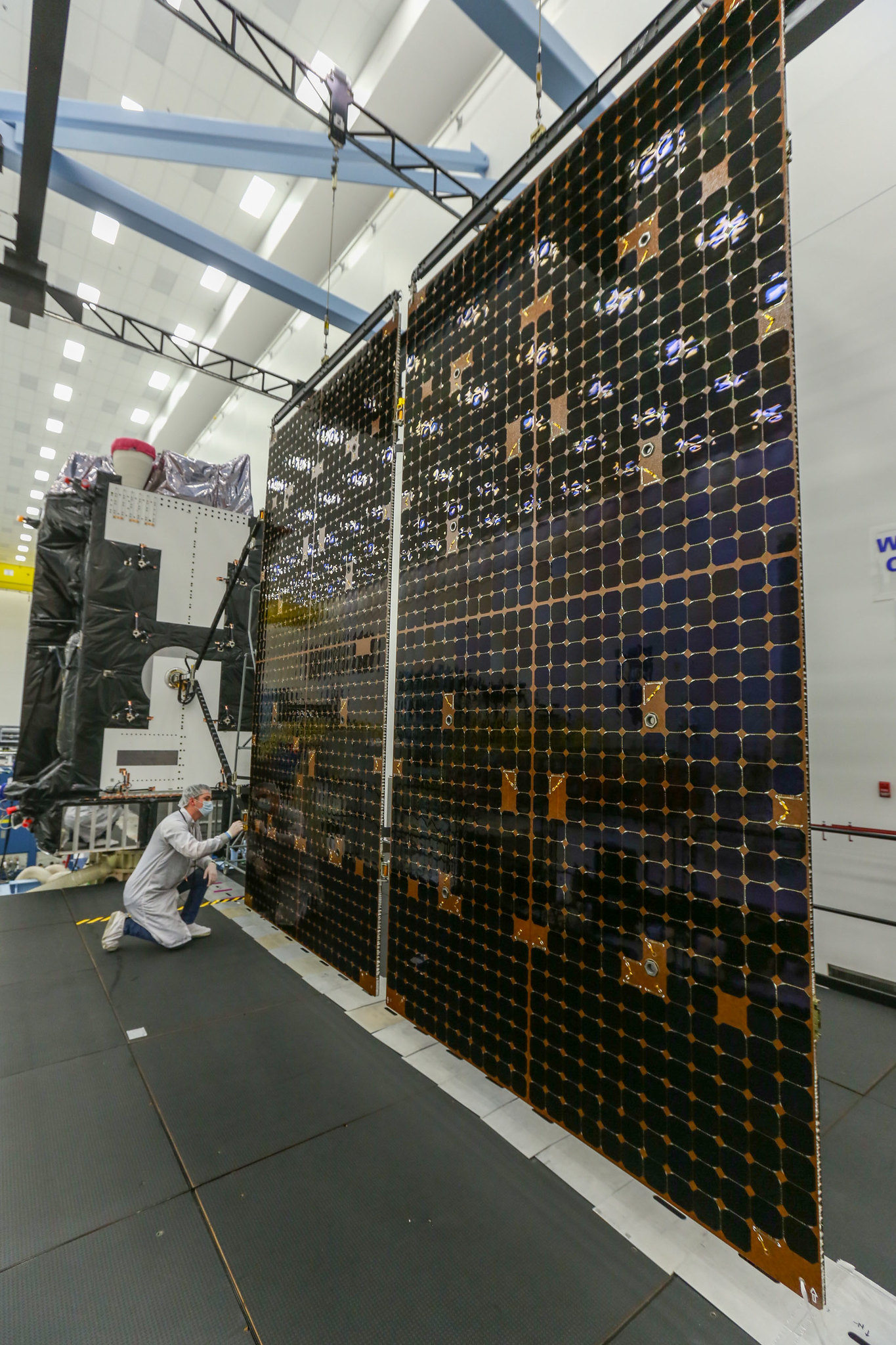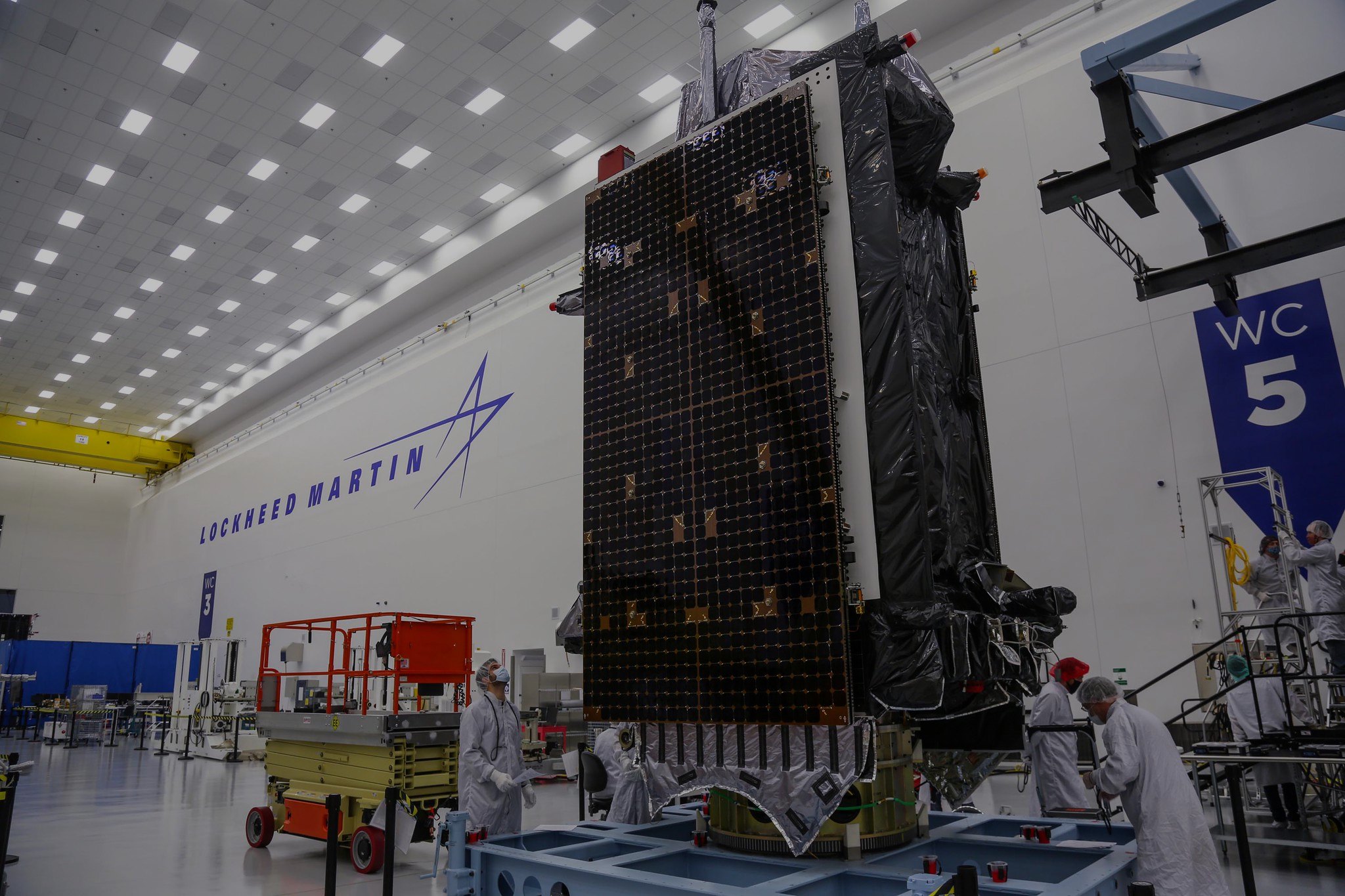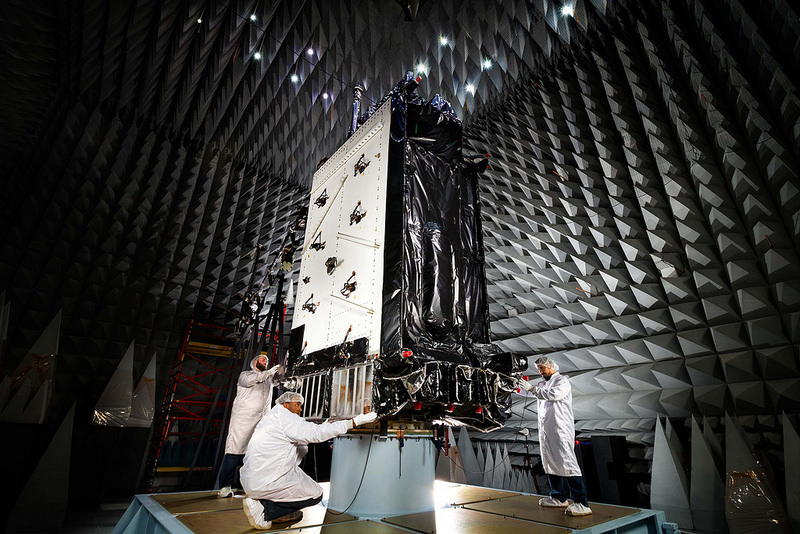At this year’s Space Symposium, the preeminent gathering of the international space community, Inside GNSS had the opportunity to sit down with Malik Musawwir, Vice President of Navigation Systems at Lockheed Martin Space.
In this exclusive interview, Musawwir revealed the latest updates regarding the company’s Global Positioning System (GPS) III satellite project, including the evolution from GPS III to GPS IIIF, advancements in anti-jamming technologies, additional capabilities to bolster military navigation and security and a first responder search and rescue (SAR) capability.
A Brief Around the World…
The landscape of space has undergone significant transformation since the launch of the first GPS satellite in the 1970’s. It has evolved into an increasingly contested domain with a wide variety of emerging threats, ranging from competitive adversaries vying for superiority to space clutter to spoofing and jamming. To stay one step ahead of the ever-changing space environment, GPS has undergone a remarkable evolution since its inception, with each iteration representing significant advancements in technology and capabilities.
Past GPS satellite generations include the Block IIA (2nd generation, “Advanced”), Block IIR (“Replenishment”), Block IIR-M (“Modernized”) and Block IIF (“Follow-on”). With each iteration, the GPS system had become more robust, reliable and capable of supporting a myriad of applications across various sectors.
Lockheed Martin’s GPS III and GPS IIIF (“Follow-on”) satellite project marks the third instantiation of the system. Of the 31 total GPS satellites already in orbit, 6 of these are Lockheed’s Block III. The company is currently on contract to construct up to 20 of these next-generation GPS III/IIIF satellites, with additional contract options available to build up to 32 space vehicles.

Next Gen GPS At the Ready
A response to the U.S. Space Force’s initiative to upgrade the current GPS satellite array, the GPS III process began with the award of contracts for 10 satellites, followed by plans for an additional 22 GPS IIIF satellites.
According to Musawwir, Lockheed has completed the remaining 4 GPS III satellites (#s 7-10), which “remain at the ready for the Space Force to launch once they have the ability to do so.”
Space Vehicle 11 (SV11) marks the beginning of the GPS IIIF series, with satellites numbered 11 through 32 comprising this next phase of the GPS program. Lockheed Martin has already started manufacturing its IIIF satellites, with numbers 11 through 20 in active production.
The assembly, testing and launch (ATLO) of these satellites takes place at Lockheed Martin’s state-of-the-art 40,000 square foot GPS processing facility in Waterton, Colorado. Integration plays a crucial role in the development of these GPS satellites. Lockheed Martin meticulously assembles all intricate systems and components to form fully functional satellites. After this, rigorous testing ensures the reliability and functionality of each satellite before launch.
Given the “single line flow” nature of ATLO, Musawwir estimates 2026 for completion of the first GPS IIIF spacecraft. This will mark yet another significant milestone in the ongoing evolution of the GPS system, as these satellites represent the pinnacle of GPS technology, with enhanced performance to meet the evolving needs of users worldwide. This block contains cutting-edge technology and enhanced functionalities. Among these new capabilities, anti-jamming (A-J) features prominently.
RMP’ing Up
The new GPS III satellites will already have greater than 8x anti-jamming capabilities above other satellites in the GPS constellation. Musawwir emphasized the even-more powerful A-J capabilities integrated into the GPS IIIF satellites, called Regional Military Protection (RMP). Using RMP functionalities, satellites can operate in higher power modes which enables them to overcome or overpower jamming threats effectively. RMP can provide up to 60x greater anti-jamming in theater to ensure U.S. and allied forces cannot be denied access to GPS in hostile environments. This is achieved through the refinement of radio frequency (RF) physics, by focusing the satellite’s beam into areas as small as 12 kilometers in diameter.
The GPS IIIF mission takes this a step further. The tech onboard combines operational behaviors designed to provide additional power within certain frequency bands to counter jamming attempts. “It’s all about power distribution,” Musawwir explained. “We’re taking RMP to the next level.”

The Search Is Over
Beyond A-J, Musawwir discussed various updates and enhancements incorporated into the GPS IIIF satellites. One notable addition, the SAR capability, enables the satellites to intercept distress calls and relay them back to Earth. Its antennas facilitate global communication, ensuring continuous access worldwide, with a growing presence in Medium Earth Orbit (MEO) to complement the GPS mission.
This can aid first responders in locating and rescuing individuals in emergency situations. This functionality is particularly crucial in maritime settings, where it is predominantly utilized. This feature, already on the Geostationary Operational Environmental Satellites – R Series (GOES-R), has proven instrumental in saving lives, contributing to over 400 total rescued facilitated by NOAA satellite SAR beacons over just a one-year period.
And Even More
In addition to RMP and SAR, the GPS III and IIIF satellites boast encrypted M-Code capabilities, ensuring secure and reliable access to GPS signals, particularly those in defense and security sectors. Currently, 25 vehicles come equipped with M-Code. This means users can rely on assured access to GPS signals even in contested environments. Once fully deployed, GPS III/IIIF will ensure that important capability is constellation wide.
Another crucial aspect of the GPS III/IIIF project, it includes its contribution to national security through the Nuclear Detonation Detection System (NDS). This system enhances the ability to detect nuclear radiation and pinpoint the location of nuclear blasts below Medium Earth Orbit (MEO) with precision. This can provide invaluable support for nuclear monitoring and response efforts.
The Sky Is Not the Limit
Lockheed Martin’s GPS III/IIIF satellite project represents a significant advancement in navigation and security technology. With enhanced A-J capabilities, SAR functionality, encrypted M-Code, and NDS integration, these satellites remain poised to redefine the standards for global positioning systems, by providing critical support to military operations, emergency response efforts and national security initiatives.
Looking ahead, Musawwir expressed enthusiasm for the continued evolution of the GPS program. “We’re excited to launch these next generation satellites in support of the Department of Defense,” he said. “GPS III, and the IIIF mission that will follow, will enable the warfighter to execute their missions…and to come home safe.”





